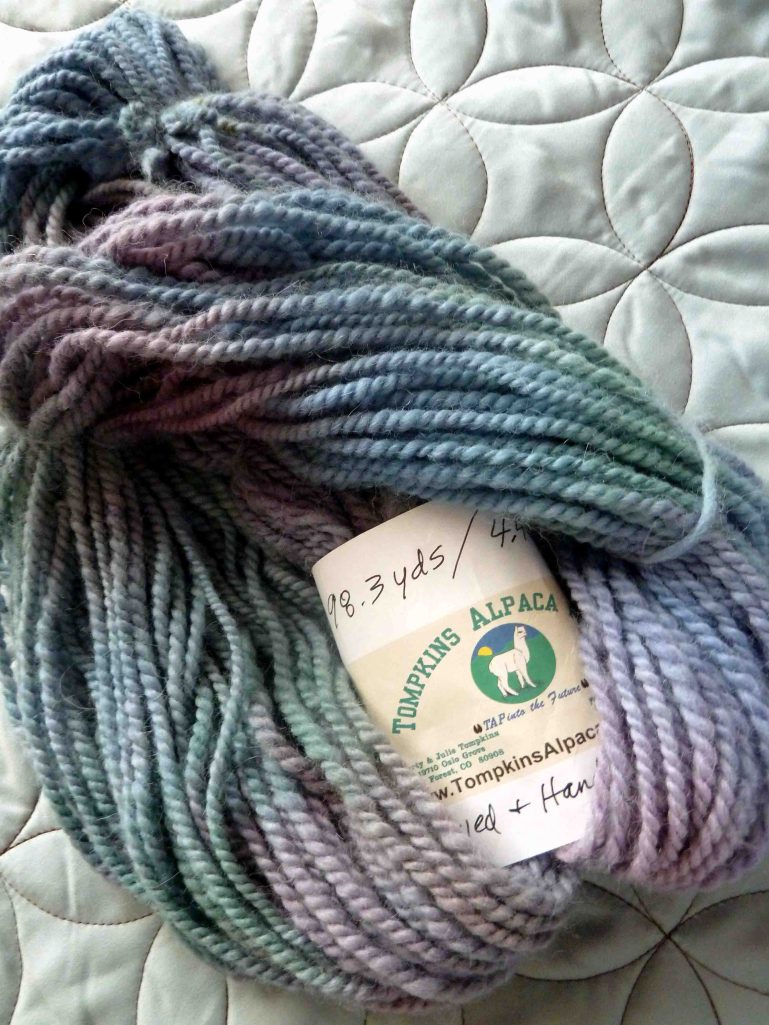“This is what we just ordered in,” the LYS owner tantalized, while waving an open catalogue in hypnotizing concentric circles before my eyes.
“Ooooh,” I murmured, mesmerized by the pictured socks. “How do they do that? The sock looks tie dyed.”
“It’s how they dye the yarn.” She snapped the book away before my ribbon of drool hit the page.
“Me want yarn.”
“I’ll call you when it comes in.”
My current sock project now seemed boring and insipid.
Days later…What was taking so long?!?!?! It was like waiting for a phone call after a first date! I was tempted to check for a dial tone.
An eternity (one week) later and Schoppel Wolle Flying Saucer (Schoppel Wolle Fliegende Untertasse) sock yarn was in. I raced to the store, family in tow with strict instructions to run interference, convinced there would be a stampede of knitters with sock needles brandished like bulls horns. As I threw open the yarn shop door my lingering question of how a knitter achieved matching socks with such unique self striping was revealed. Two strands of yarn wrapped around a cardboard tube, like a wide ribbon bobbin. They were hand dyed at the same time, said the tube. How clever! I thought, unaware of the hours of torture awaiting me.
Oh, what to choose? Six colorway options, but which was best? After thirty minutes of deliberation and the realization that they don’t actually tell you which color you held, you guess based on the pictures of finished socks on the bobbin, a feat not as easy as it sounds, I left with two. His and hers.
Once home I immediately set to balling the yarn into usable balls so I could abandon my lame project and start this long-awaited yarn.
“Please, will you help me,” I implored my husband.
For every pleasure there is a pain. Cake = fat thighs. Dog petting = hair clean up. Running = being chased by a bear. (Wait, that may just be me.)
And for Schoppel Wolle Flying Saucer sock yarn that pain is balling.
We jabbed a knitting needle through the hole in the center of the tube. The instructions said to hang it from a window handle, but my windows don’t have handles so we suspended it between stacks of books. One leg cramp, two long hours, four squinty eyes, seven yarn tangles, and twelve grumbled curses later and we were done. Both literally and figuratively.
I would like to take this moment to assure Schoppel Wolle that I would be perfectly content to buy two bagged balls of yarn with a statement that they matched. I would gladly believe you as long as it meant I didn’t have to torture myself and my husband with balling this yarn. Ever. AGAIN!
Months later when we felt up to balling the second bobbin of Schoppel Wolle Flying Saucer my husband growled, “You are never to buy this yarn again.”
Thus Schoppel Wolle Flying Saucer is part awesome yarn, part torture device.
That said once the balling is done, knitting it is a dream. Perfectly smooth and easy to knit, I haven’t encountered any knots that would disrupt the patterning and it is delightful to see the pattern develop.
I was jubilant when I finished my husband’s pair. They aren’t quite identical due to variations in knitting tension and figuring our where to turn the heel so that the same part of the pattern faced forward was a little challenging, but they are still fabulous! Unfortunately, I knit the second pair toe-up and while the patterning worked for the foot, it didn’t work so well for the leg. Check out the pic to see how they each turned out. One of my lovely readers shared a very helpful link for those who want to maximize this yarns potential.
Have you encountered this yarn? What did you think?
Technical details:
75% Wool 25% Nylon, 2-3mm needles, 100 g, 459 yards
(I used 2.5 mm needles)

Sock on the left was toe-up, sock on the right top-down.





